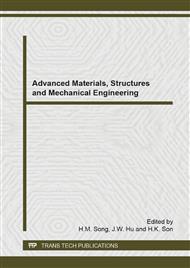[1]
L. Surber and C.P. Robinson: Survey of inlet development for supersonic aircraft, 19th Jt. Propuls. Conference, American Institute of Aeronautics and Astronautics, Reston, Virigina (1983).
DOI: 10.2514/6.1983-1164
Google Scholar
[2]
P. Martin, B. Crawford, C. Britcher, S. Miley and T. Wang: Experiments on an inlet-airfoil designed for heat exchangers of a high altitude RPA, 16th AIAA Appl. Aerodyn. Conference, American Institute of Aeronautics and Astronautics, Reston, Virigina (1998).
DOI: 10.2514/6.1998-2533
Google Scholar
[3]
R. McCandless, M. Lederer amd W. Yanta: High speed inlet testing in the NAVSWC wind tunnels, 16th Aerodyn. Gr. Test. Conference, American Institute of Aeronautics and Astronautics, Reston, Virigina (1990), p.1.
DOI: 10.2514/6.1990-1412
Google Scholar
[4]
D.V. Wie, F. Kwok and R. Walsh: Starting characteristics of supersonic inlets, 32nd Jt. Propuls. Conf. Exhib., American Institute of Aeronautics and Astronautics, Reston, Virigina (1996).
DOI: 10.2514/6.1996-2914
Google Scholar
[5]
Y. He, J. Shi, Y. Xin, Y. Gao and X. Huang: Gas Turbine Exp. Res. Vol. 21 (2008) p.59.
Google Scholar
[6]
W. Yanta, A. Collier, C. Spring, III, C. Boyd: Experimental measurements of the flow in a scramjet inlet at Mach 4, 26th Aerosp. Sci. Meet., American Institute of Aeronautics and Astronautics, Reston, Virigina, (1988).
DOI: 10.2514/6.1988-271
Google Scholar
[7]
K. Saha, S.N. Singh, V. Seshadri and S. Mukhopadhyay: J. Aircr. Vol. 44 (2007), p.187.
Google Scholar
[8]
E. Taskinoglu and D. Knight: Numerical Analysis of Submerged Inlets, 20th AIAA Appl. Aerodyn. Conf., American Institute of Aeronautics and Astronautics, Reston, Virigina (2002), p.1.
DOI: 10.2514/6.2002-3147
Google Scholar
[9]
R.H. Yen and T.H. Ko: J. Propuls. Power Vol. 9 (1993), p.686.
Google Scholar
[10]
A. Borovikov, V. Gavriliouk, I. Gilevich, V. Duganov, A. Khokhlov and V. Stepanov: Gasdynamic design of supersonic and hypersonic airframe integrated inlets and nozzles, Sp. Pl. Hypersonic Syst. Technol. Conf., American Institute of Aeronautics and Astronautics, Reston, Virigina (1996).
DOI: 10.2514/6.1996-4549
Google Scholar
[11]
D.J. Dalle, M.L. Fotia and J.F. Driscoll: J. Propuls. Power Vol. 26 (2010) , p.545.
Google Scholar
[12]
G.J. Harloff and G.E. Smith: AIAA J Vol. 34 (1996) , p.778.
Google Scholar
[13]
F.M. White: Fluid Mechanics, McGraw-Hill, New York (2003).
Google Scholar


